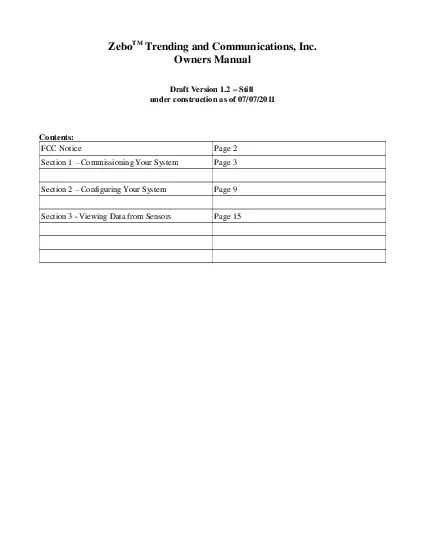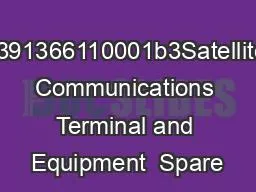PDF-ZeboTM Trending and Communications IncOwners ManualDraft Version 12 S
Author : phoebe | Published Date : 2021-08-11
FCC NoticePage 2Section 1 Commissioning Your SystemPage 3Section 2 Configuring Your SystemPage 9Section 3 Viewing Data from SensorsPage 15FCC NoticeThis device
Presentation Embed Code
Download Presentation
Download Presentation The PPT/PDF document "ZeboTM Trending and Communications IncOw..." is the property of its rightful owner. Permission is granted to download and print the materials on this website for personal, non-commercial use only, and to display it on your personal computer provided you do not modify the materials and that you retain all copyright notices contained in the materials. By downloading content from our website, you accept the terms of this agreement.
ZeboTM Trending and Communications IncOwners ManualDraft Version 12 S: Transcript
Download Rules Of Document
"ZeboTM Trending and Communications IncOwners ManualDraft Version 12 S"The content belongs to its owner. You may download and print it for personal use, without modification, and keep all copyright notices. By downloading, you agree to these terms.
Related Documents














